May 19, 2017 (LifeSiteNews) – The family has been created immediately by God, so the Magisterium of the Church teaches us.[1] Pope Leo XIII says in his magisterial encyclical on marriage and family: “Marriage has God for its Author, and was from the very beginning a kind of foreshadowing of the Incarnation of His Son; and therefore there abides in it something holy and religious; not extraneous, but innate; not derived from men, but implanted by nature. Innocent III, therefore, and Honorius III, our predecessors, affirmed not falsely nor rashly that a sacrament of marriage existed ever amongst the faithful and unbelievers.”[2]
“The family therefore holds directly from the Creator the mission and hence the right to educate the offspring, a right inalienable because inseparably joined to the strict obligation, a right anterior to any right whatever of civil society and of the State, and therefore inviolable on the part of any power on earth.”[3] Parents are therefore under a grave obligation to see to the religious and moral education of their children.[4]
Pope Leo XIII gave us a very concise explanation about the original and first duty of parents concerning the education of their children, and in the first place concerning the education in the Catholic faith. This duty has its foundation in the natural order of the Divine creation: “The common sense of mankind is in such complete accord, that they would be in open contradiction with it who dared maintain that the children belong to the State before they belong to the family, and that the State has an absolute right over their education. Untenable is the reason they adduce, namely that man is born a citizen and hence belongs primarily to the State, not bearing in mind that before being a citizen man must exist; and existence does not come from the State, but from the parents. The children are something of the father, and as it were an extension of the person of the father; and, to be perfectly accurate, they enter into and become part of civil society, not directly by themselves, but through the family in which they were born.”[5] “And therefore,” says the same Pope Leo XIII, “the father’s power is of such a nature that it cannot be destroyed or absorbed by the State; for it has the same origin as human life itself.”[6] Pope Leo XIII declares in another memorable encyclical, where he thus sums up the rights and duties of parents: “By nature parents have a right to the education of their children, but with this added duty that the education and instruction of the child be in accord with the end for which by God’s blessing it was begotten. Therefore it is the duty of parents to make every effort to prevent any invasion of their rights in this matter, and to make absolutely sure that the education of their children remain under their own control in keeping with their Christian duty, and above all to refuse to send them to those schools in which there is danger of imbibing the deadly poison of impiety.”[7]
Already more than seventy years ago Pope Pius XII made an appeal to the Christian families to be new crusaders in spreading and defending the true Catholic faith in midst of the general and heavy torpor into which the drugs of false ideas, widely diffused, have sunk the human family in the twentieth century. This diagnosis, which Pius XII made about the spiritual health of his time, is fully applicable to our times and it became even much worse. Pius XII said: “It is for the best and most distinguished members of the Christian family, filled with the enthusiasm of Crusaders, to unite in the spirit of truth, justice and love to the call; God wills it, ready to serve, to sacrifice themselves, like the Crusaders of old. If the issue was then the liberation of the land hallowed by the life of the Incarnate Word of God, the call today is, if We may so express Ourselves, to traverse the sea of errors of our day and to march on to free the holy land of the spirit, which is destined to sustain in its foundations the unchangeable norms and laws on which will rise a social construction of solid internal consistency.”[8]
The first and most holy goal and end of matrimony and family consists in giving birth to new citizens of heaven. Pope Leo XIII said: “By the command of Christ, it not only looks to the propagation of the human race, but to the bringing forth of children for the Church, ‘fellow citizens with the saints, and the domestics of God’;(Eph. 2:19) so that ‘a people might be born and brought up for the worship and religion of the true God and our Saviour Jesus Christ’ (Catechismus Romanus, cap. 8).”[9] The family is therefore the first and original place, where the integrity and the beauty of the Catholic faith should be taught to the children, and by this way handed over to the future generations. Indeed from this transmission of the faith depends the spiritual health of a nation as taught Pope Pius XII: “The family is holy. It is the cradle not only for the children, but the entire nations. Man and woman should pass on the torch of the physical and also spiritual, of the moral and of the Christian life to the future generations.”[10]
From the early centuries of Christianity the family was seen as the Church “in miniature,” and the Church itself was called the “family of God”, especially the Christian community gathered for the celebration of the sacred liturgy was called the “family of God”, as we can often read in the liturgical texts, so for example in the Canon of the Mass. It was especially the Second Vatican Council, which reminded us of this ancient truth. In the Dogmatic Constitution “Lumen gentium” the Council teaches: “The family is, so to speak, the domestic church. In it parents should, by their word and example, be the first preachers of the faith to their children; they should encourage them in the vocation which is proper to each of them, fostering with special care a vocation to a sacred state.”[11] Pope John Paul II, the Pope of the family, made this famous affirmation: “In the future, evangelization will depend largely on the domestic church.”[12] The same Pope said: “The future of humanity passes by way of the family.”[13]
So great and splendid is the educational ministry of Christian parents that Saint Thomas has no hesitation in comparing it with the ministry of priests: “Some only propagate and guard spiritual life by a spiritual ministry: this is the role of the sacrament of Orders; others do this for both corporal and spiritual life, and this is brought about by the sacrament of marriage, by which a man and a woman join in order to beget offspring and bring them up to worship God.”[14]
Pope John Paul II gives to the catechesis in family the priority over all other forms of catechesis, when he says: “Family catechesis, therefore, precedes, accompanies, and enriches all other forms of catechesis. Furthermore, in places where anti-religious legislation endeavors even to prevent education in the faith, and in places where widespread unbelief or invasive secularism makes real religious growth practically impossible, ‘the domestic church’ remains the one place where children and young people can receive an authentic catechesis. Thus, there cannot be too great an effort on the part of Christian parents to prepare for this ministry of being their own children’s catechists and to carry it out with tireless zeal. Encouragement must also be given to the individuals or institutions that, through person-to-person contacts, through meetings, and through all kinds of pedagogical means, help parents to perform their task: the service they are doing to catechesis is beyond price.”[15]
One of the main causes of the moral, spiritual and religious crisis of the current time consists in the religious ignorance, in ignoring the truths of the faith and in an erroneous knowledge of the faith. Pope Pius X very rightly observed this connection, saying: “The enemy has, indeed, long been prowling about the fold and attacking it with such subtle cunning that now, more than ever before, the prediction of the Apostle to the elders of the Church of Ephesus seems to be verified: ‘I know that . . . fierce wolves will get in among you, and will not spare the flock’ (Act 20:29). Those who still are zealous for the glory of God are seeking the causes and reasons for this decline in religion. Coming to a different explanation, each points out, according to his own view, a different plan for the protection and restoration of the kingdom of God on earth. But it seems to Us, that while we should not overlook other considerations. We are forced to agree with those who hold that the chief cause of the present indifference and, as it were, infirmity of soul, and the serious evils that result from it, is to be found above all in ignorance of things divine. This is fully in accord with what God Himself declared through the Prophet Osee: ‘And there is no knowledge of God in the land. Cursing and lying and killing and theft and adultery have overflowed: and blood hath touched blood. Thereafter shall the land mourn, and everyone that dwelleth in it shall languish’ (Osee 4:1-3).”[16] And Pope Benedict XIV wrote: “We declare that a great number of those who are condemned to eternal punishment suffer that everlasting calamity because of ignorance of those mysteries of faith which must be known and believed in order to be numbered among the elect.”[17] For this reason the same Pope Benedict XIV said: “There is nothing more effective than catechetical instruction to spread the glory of God and to secure the salvation of souls.”[18]
The beauty of the Catholic faith manifests itself in a special manner in large families. We possess one of the most striking and illuminating affirmations of the Magisterium on this theme in the following words of Pope Pius XII addressed to the Associations of Large Families: “Large families are the most splendid flower-beds in the garden of the Church. […] The brows of the fathers and mothers may be burdened with cares, but there is never a trace of that inner shadow that betrays anxiety of conscience or fear of an irreparable return to loneliness, Their youth never seems to fade away, as long as the sweet fragrance of a crib remains in the home, as long as the walls of the house echo to the silvery voices of children and grandchildren. Their heavy labors multiplied many times over, their redoubled sacrifices and their renunciation of costly amusements are generously rewarded even here below by the inexhaustible treasury of affection and tender hopes that dwell in their hearts without ever tiring them or bothering them. And the hopes soon become a reality when the eldest daughter begins to help her mother to take care of the baby and on the day the oldest son comes home with his face beaming with the first salary he has earned himself. […] Children in large families learn almost automatically to be careful of what they do and to assume responsibility for it, to have a respect for each other and help each other, to be open-hearted and generous. For them, the family is a little proving ground, before they move into the world outside, which will be harder on them and more demanding.”[19]
The beauty of the Catholic faith manifests itself in the fact that it is precisely the family which is the first breeding ground and the first seedbed for the priestly vocations. The Second Vatican Council spoke about the family as the first seminary in the process of fostering and training priestly vocations.[20] History has given proof that the majority of priestly vocations come from large families. Pope Pius XII highlighted this interrelationship saying: “With good reason, it has often been pointed out that large families have been in the forefront as the cradles of saints. We might cite, among others, the family of St. Louis, the King of France, made up of ten children, that of St. Catherine of Siena who came from a family of twenty-five, St. Robert Bellarmine from a family of twelve, and St. Pius X from a family of ten. Every vocation is a secret of Providence; but these cases prove that a large number of children does not prevent parents from giving them an outstanding and perfect upbringing; and they show that the number does not work out to the disadvantage of their quality, with regard to either physical or spiritual values.”[21]
The supernatural spirit of love and of self-sacrifice of the mother (and oftentimes of the mother of a large family) is the very foundation of a priestly vocation and of the fruitfulness of the priestly life of her son. The following moving example illustrates this truth in an impressive manner: “In the city of Zaborze in Upper Silesia is a grave which is frequently visited by pilgrims. Above the grave rises a Lourdes grotto. At the foot of the statue of the Immaculate Conception, in a little glass case, lies a myrtle wreath. Here is the story of the myrtle wreath. A priest is buried in the grave at the foot of the grotto. He was the youngest of ten children. As a young man he worked very hard to earn enough money to study for the priesthood, because his parents were poor. After his ordination he went as a missionary to India where he worked for many years. When he died they buried him in his home town of Zaborze and erected a grotto of Our Lady of Lourdes above his tomb because he had always fostered a special devotion to Mary Immaculate. Some time after the burial of this zealous priest, a little box was found among his possessions with a note pasted upon it: ‘To be opened after my death.’ The box contained a myrtle wreath and this note: ‘This is my mother’s bridal wreath. I have carried it with me to various countries, on my journeys over land and sea, in memory of that sacred moment when my mother vowed not only fidelity but also uprightness at the altar of God. She has kept that vow. She has had the courage to have me after the ninth child. Next to God I owe her my life and my vocation to the priesthood. If she had not wanted me, I would not have become a priest and a missionary; I would not have been able to work for the salvation of souls. Place this wreath, my mother’s bridal wreath, into my grave. This I ask of the one who finds it.’ When they found the wreath, the grave had already been closed, so they placed it at the foot of the statue of the Immaculate Mother to whom he dedicated his life.”[22]
As another example we could mention the mother of Saint Pius X, Margherita Sanson. She raised up ten children. She taught them to pray first thing in the morning, communicate with God throughout the day, and to end each day with prayer, bringing the family together for an examination of conscience. The well-known story of the wedding ring of his mother remains always inspiring: Following her son’s episcopal ordination and placement in Mantova, the future Pope Pius X visited his old mother to thank her. After kissing his episcopal ring, she showed him her wedding ring and said, “Your ring is very beautiful, Giuseppe, but you wouldn’t have it if I didn’t wore this my ring.” I know the following story: A priest came to the mother of a priest to congratulate her with the episcopal nomination of her son. To this congratulation the mother replied: “This does not mean this much. The most important thing is, that my son remain always faithful to Jesus”. And each time when this bishop phones his mother, before hanging up the telephone receiver, she says to her son: “You remain faithful to Jesus!” To remain faithful to Jesus, means to remain faithful to all of His commandments and to all of His Divine teachings, and to prefer temporal disadvantages and disdain, even on the part of ecclesiastical persons, rather than to make compromises regarding the teaching and the observance of His commandments and teachings.
When parents impart to their children a truly Catholic education in faith, they lay the foundation of the faith of the future priests and bishops. Usually the uncompromising and life-long fidelity to the integrity of the Catholic faith on behalf of a priest and of a bishop, is a fruit of the education which he got in his family from his father or from his mother or from both, or from his grandmother.
The truth which says that the family is the original place of the beauty of the Catholic Faith we can see also in the following edifying witness in the autobiography of Saint Therese of the Infant Jesus: “Feast days! Those words conjure up more wonderful memories! I did so love them and you were able to explain so well what they were all about. That again was a foretaste of Heaven. But the procession of the Blessed Sacrament was what I loved best, for I could scatter flowers beneath the feet of God! I used to throw them up high into the air before they fell and when my rose petals touched the monstrance my happiness was complete. The big feasts did not come along so often but there was one most dear to me, and it came every week – Sunday, Our Lord’s own day, a wonderful day, a day of rest. We all went to the High Mass, and when it was time for the sermon, I remember we had to leave our place because it was so far away from the pulpit and go all up the nave to find places nearer. This was not always easy to do, but everyone seemed quite ready to find room for little Thérèse and her father. Uncle, especially, seemed very happy when he saw us Coming; he used to call me his little ray of sunshine and say that the sight of this venerable patriarch hand in hand with his little daughter always touched his heart. The fact that all this drew attention to us never bothered me; I was far too interested in what the priest was saying. The first sermon I really understood was one on Our Lord’s Passion, and I was very much moved by it; that was when I was five and a half, and from then on I could take in and appreciate all that was said. If ever St. Teresa was mentioned, Father used to bend down toward me and whisper: “Listen, my Little Queen, he is talking about your Patron Saint.” Then I would really listen, but I am afraid I kept my eyes on Father far more than on the preacher because I could read such a lot in his noble face. Sometimes his eyes would fill with tears he could not keep back, and when he was listening to the eternal truths, he seemed to be already in another world and no longer in this. He was then a long way from his journey’s end, however; long, sad years had yet to pass before he opened his eyes on Heaven’s loveliness and Jesus wiped away His faithful servant’s tears” (Story of a soul).
In those times, the Eucharistic liturgy was not celebrated in the vernacular and without explanatory remarks and commentaries. However, Saint Therese of the Infant Jesus and her father Saint Louis Martin had a very intense active participation in the liturgy of the Holy Mass, an active participation, which was marked with silence, as recommended also by the Second Vatican Council.[23] Undoubtedly, their participation in the liturgy was more active, that means, more conscious, attentive and pious than that of many Catholics in our days, where the liturgy is celebrated entirely in vernacular and where active participation is realized in playing an exterior liturgical role, against the prescriptions of the Second Vatican Council.[24] Recently Cardinal Robert Sarah, the Prefect of the Congregation of Divine Worship, made the following apt observation on this issue: “Most of the faithful—including priests and bishops—do not know this teaching of the Council. […] As Benedict XVI often emphasized, at the root of the liturgy is adoration, and therefore God. Hence it is necessary to recognize that the serious, profound crisis that has affected the liturgy and the Church itself since the Council is due to the fact that its center is no longer God and the adoration of Him, but rather men and their alleged ability to ‘do’ something to keep themselves busy during the Eucharistic celebrations.”[25]
The present situation of the world and partly of the life of many Catholics and ministers of the Church could be characterized as a great apostasy, an apostasy from the faith in the true Divinity of Christ, from the faith in the unique way of salvation through Christ and an apostasy from the faith in the perennial validity of the Divine commandments. Such an apostasy signifies ultimately to renounce Christ and to accept the spirit of the world, diluting Christ in a gnostic manner into the materialistic, naturalistic and esoteric spirit of the world. Recently Cardinal Robert Sarah made the following striking statement on the real current spiritual situation inside the Church: “Political Europe is rebuked for abandoning or denying its Christian roots. But the first to have abandoned her Christian roots and past is indisputably the post-conciliar Catholic Church. […] While more and more voices of high-ranking prelates stubbornly affirm obvious doctrinal, moral and liturgical errors that have been condemned a hundred times and work to demolish the little faith remaining in the people of God, while the bark of the Church furrows the stormy sea of this decadent world and the waves crash down on the ship, so that it is already filling with water, a growing number of Church leaders and faithful shout: ‘Tout va très bien, Madame la Marquise!’ (‘Everything is just fine, Milady!’)”[26] These words reflect perfectly the analysis of the modern world made by Saint Pius X already a hundred years ago: “The great movement of apostasy being organized in every country for the establishment of a One-World Church which shall have neither dogmas, nor hierarchy, neither discipline for the mind, nor curb for the passions, and which, under the pretext of freedom and human dignity, would bring back to the world (if such a Church could overcome) the reign of legalized cunning and force, and the oppression of the weak, and of all those who toil and suffer. […] Indeed, the true friends of the people are neither revolutionaries, nor innovators: they are traditionalists.”[27]
The Catholic family is the original place of the experience of the beauty of the Catholic Faith. The Catholic family represents the first bulwark against the current great apostasy. The two most efficient weapons against the modern apostasy outside and inside the life of the Church are the purity and integrity of the faith and the purity of a chaste life. The admonition which Saint Louis IX, King of France, left to his son, remains always valid: “My dearest son, my first instruction is that you should love the Lord your God with all your heart and all your strength. Without this there is no salvation. Keep yourself, my son, from everything that you know displeases God, that is to say, from every mortal sin. You should permit yourself to be tormented by every kind of martyrdom before you would allow yourself to commit a mortal sin. […] Work to remove all sin from your land, particularly blasphemies and heresies” (Letter to his son).
Once a member of an anti-christian movement, who later converted to the Catholic Church, said to Fr. Mateo Crawley, the Apostle of the Enthronement of the Sacred Heart: “We have only one goal in mind: to dechristianise the family. We leave to the Catholics gladly the churches, the chapels, the cathedrals. For us it is enough to have the family in order to corrupt the society. If we have control over the family, our victory over the Church is guaranteed.”[28] True Catholic families – and desirably large families – will strengthen the Church of our days with the beauty of the Catholic Faith. From that faith will come out new Catholic fathers and mothers, and from them there will come out a new generation of zealous priests and intrepid bishops, who will be ready to give their life for Christ and for the salvation of the souls. Christianity was born out of the family, the Holy Family, so that the family may be born again out of Christianity. The first fruit of the redemption is the Holy Family, just as the first blessing of the Creator was given to the family. Indeed, what the current world and the Church mostly need, are true Catholic families, the original places of the beauty of the Catholic Faith.
[1] cf. Pius XI., Encyclical Divini illius magistri, 12.
[2] Encyclical Arcanum Divinae, n. 19, 10 February 1880. Concerning Innocent III, see Corpus juris canonici, cap. 8, De divort., ed. cit., Part 2, col. 723. Innocent III refers to 1 Cor. 7:13. Concerning Honorius III, see cap. ii, De transact., (op. cit., Part 2 col. 210).
[3] Pius XI, Encyclical Divini illius magistri, 32.
[4] CIC 1917, can. 1113 and CIC 1983, can. 793
[5] Encyclical Rerum novarum
[6] Ibid.
[7] Encyclical Sapientiae christianae
[8] Christmas Message of 1942
[9] Encyclical Arcanum Divinae, 10
[10] Radio message on 13 May 1942
[11] Lumen gentium, 11
[12] Address to the Third General Conference of the Latin American Episcopate, January 28, 1979
[13] Apostolic Exhortation Familiaris consortio, 86
[14] Summa contra Gentiles, IV, 58
[15] Apostolic Exhortation Catechesi tradendae, 68
[16] Encyclical Acerbo nimis, 1, 15 April 1905
[17] Instit., 27:18
[18] Constitution, Etsi minime, 13
[19] Address to the Directors of the Associations for Large Families of Rome and Italy in January 20, 1958
[20] cf. Decree Optatam totius, 2
[21] Address to the Directors of the Associations for Large Families of Rome and Italy in January 20, 1958
[22] Lovasik, L.G., Treasury of Catechism Stories, Tarentum PA 1966, nr. 386
[23] cf. Sacrosanctum Concilium, 30
[24] cf. Sacrosanctum Concilium, 28; 36; 56
[25] Address to the Colloquium “The Source of the Future” on the occasion of the 10th anniversary of the publication of the Motu proprio Summorum Pontificum by Pope Benedict XVI, March 29 – April 1, 2017, Herzogenrath, Germany
[26] Address to the Colloquium “The Source of the Future” on the occasion of the 10th anniversary of the publication of the Motu proprio Summorum Pontificum by Pope Benedict XVI, March 29 – April 1, 2017, Herzogenrath, Germany
[27] Encyclical Notre Charge Apostolique
[28] Freundeskreis Maria Goretti e.V. (ed.), Familie und Glaube, München 2001, p. 146
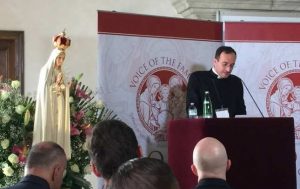
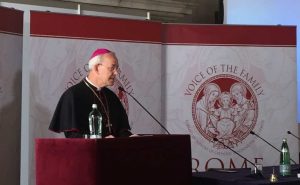 Editor’s note: This address was delivered by His Excellency Bishop Athanasius Schneider, auxiliary bishop of Astana in Kazakhstan, on 19 May 2017 at the fourth annual Rome Life Forum, which is organised by Voice of the Family.
Editor’s note: This address was delivered by His Excellency Bishop Athanasius Schneider, auxiliary bishop of Astana in Kazakhstan, on 19 May 2017 at the fourth annual Rome Life Forum, which is organised by Voice of the Family. In an attempt to continue her desired “transition” from female to male, Evan Michael Minton was scheduled by her surgeon to undergo a hysterectomy at Dignity Health chain’s Catholic Mercy San Juan Medical Center in Carmichael, California last summer. The surgery was denied by the Catholic hospital’s policy. And, although Minton was able to have the surgery at another Dignity Health chain hospital in September, she
In an attempt to continue her desired “transition” from female to male, Evan Michael Minton was scheduled by her surgeon to undergo a hysterectomy at Dignity Health chain’s Catholic Mercy San Juan Medical Center in Carmichael, California last summer. The surgery was denied by the Catholic hospital’s policy. And, although Minton was able to have the surgery at another Dignity Health chain hospital in September, she  March 28, 2017 (LifeSiteNews) — I had always dreamed as a little girl of Prince Charming, castles, and fairytale endings. But what took place exactly one week before my birthday in September 2009 was no childhood dream, but an evil nightmare filled with pain and utter disbelief.
March 28, 2017 (LifeSiteNews) — I had always dreamed as a little girl of Prince Charming, castles, and fairytale endings. But what took place exactly one week before my birthday in September 2009 was no childhood dream, but an evil nightmare filled with pain and utter disbelief. When I get in touch with Rosa Pich by Skype during Holy Week, I discover that she is on holiday with 12 of her children in Torreciudad, a shrine dedicated to Our Lady in northern Spain. “We are trying to return to normal life,” she says, following the death of her husband, Chema, of liver cancer little more than a month earlier. “We have cried a lot, we have prayed a lot, but life continues,” she says. “I have come to see that when God gives you a cross to carry, he always gives you the grace you need to bear it.”
When I get in touch with Rosa Pich by Skype during Holy Week, I discover that she is on holiday with 12 of her children in Torreciudad, a shrine dedicated to Our Lady in northern Spain. “We are trying to return to normal life,” she says, following the death of her husband, Chema, of liver cancer little more than a month earlier. “We have cried a lot, we have prayed a lot, but life continues,” she says. “I have come to see that when God gives you a cross to carry, he always gives you the grace you need to bear it.” http://www.ewtnnews.com/catholic-news/US.php?id=15601
http://www.ewtnnews.com/catholic-news/US.php?id=15601 The message of Fatima is, in its basic nucleus, a call to conversion and repentance, as in the Gospel. This call was uttered at the beginning of the twentieth century, and it was addressed particularly to this present century. … The call to repentance is a motherly one, and at the same time it is strong and decisive. (Pope Saint John Paul II,
The message of Fatima is, in its basic nucleus, a call to conversion and repentance, as in the Gospel. This call was uttered at the beginning of the twentieth century, and it was addressed particularly to this present century. … The call to repentance is a motherly one, and at the same time it is strong and decisive. (Pope Saint John Paul II, 
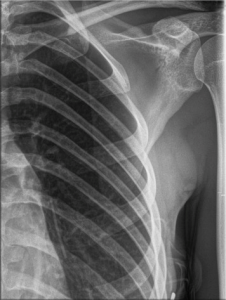
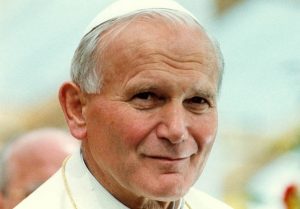





 May 9, 2017 (
May 9, 2017 (
 When doctors told Chelsea Torres that she was carrying conjoined twins, they warned her that the babies probably would not survive past the first trimester.
When doctors told Chelsea Torres that she was carrying conjoined twins, they warned her that the babies probably would not survive past the first trimester.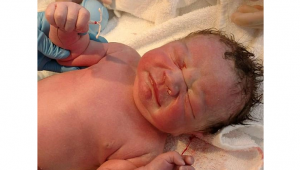 Baby Dexter was not supposed to be.
Baby Dexter was not supposed to be.
 MICHAEL COOK MAY 2, 2017 | 5:45PM BRUSSELS, BELGIUM
MICHAEL COOK MAY 2, 2017 | 5:45PM BRUSSELS, BELGIUM MANCHESTER, England, April 27, 2016 (
MANCHESTER, England, April 27, 2016 ( In a society where preborn children are treated as disposable property, and disregarded in the name of cold, sterile, euphemisms such as “reproductive rights” and “choice,” it’s rare to find a mother who actually does the opposite of putting herself above her child.
In a society where preborn children are treated as disposable property, and disregarded in the name of cold, sterile, euphemisms such as “reproductive rights” and “choice,” it’s rare to find a mother who actually does the opposite of putting herself above her child.
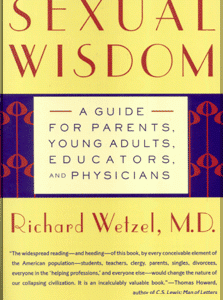
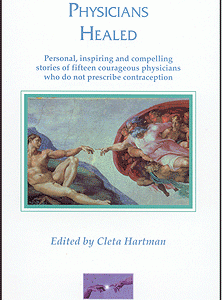

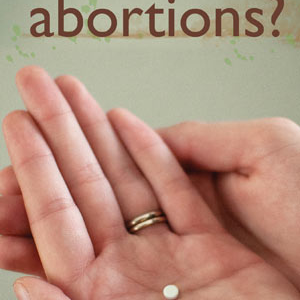

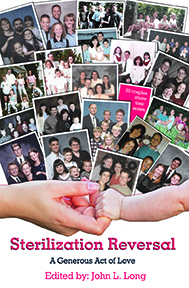

Teenagers and the STD nobody is talking about
Meg Meeker | May 31 2017
I do not take the topic of teens and sex lightly. I have seen the pain of STDs in 13- and 14-year-old children in my office along with other serious health issues caused by sex.
Most people are aware of the physical repercussions of sex:
You may be familiar with those numbers, but few are aware of the emotional repercussions teen sex can have.
For the thousands of teens I’ve treated and counseled, many of them—yes, teen boys too—have depression related to sexual activity. You rarely hear the correlation made, but I consider depression an STD with effects as devastating as HPV, chlamydia or any physical infection.
Depression related to teen sex can be as devastating as any STD
Consider these numbers:
I believe it is no coincidence that as STDs have become an epidemic in teens, so has depression. The correlation is startling.
Depression in a teen occurs on a biochemical as well as psychological level and the two are linked. We know that the levels of specific hormones in the cerebral spinal fluid of depressed teens are different from those of non-depressed teens.
We know that depression occurs when a teen experiences un-grieved losses—hurts that have been buried in their psyche, festering like abscesses. When a teen doesn’t deal with a traumatic or hurtful event, he ends up stuffing it and the negative emotions come out sideways. He becomes angry, withdrawn and depressed.
Teenagers don’t have the maturity to handle sex
Think about a 17-year-old boy who has had multiple sexual partners (as most 17 year old boys these days are encouraged to do.) He has sex because he believes this is what he must do to be a “man”. However, not all of those sexual encounters go well. He is too ashamed to admit this to his friends and knows he can’t talk to his parents about it, so he pretends like everything is fine, stuffs his feelings and continues having multiple partners.
Or consider a 15-year-old girl who feels pressured to have sex with her boyfriend. She finally does and two weeks later, he breaks up with her. She can’t explain to her parents why the break-up is so upsetting (she may not even know why herself), so she tries to find consolation in the next boy she dates, starting an unhealthy cycle and not dealing with the grief and the loss.
Teenagers don’t have the psychological or cognitive maturity to handle sex, regardless of what adults in our culture say. And they certainly can’t handle sex with multiple partners. Depression occurs by un-grieved losses and the truth is, sex for teen boys and girls causes many losses on many levels.
The misconceptions many parents have about their teenagers are these: that teen boys are nothing more than vats of hormones, that girls want to be sexually active in high school and college because that’s what girls do, and that sex is really fine for kids if they use “precautions” and stay “safe.” I discuss the dangers of both of these misconceptions, as well as the link between teen sex and depression in a recent episode of my Parenting Great Kids podcast.
First, boys have minds, hearts and spirits and treating them otherwise is wrong. Second, most girls don’t want to be sexually active but have no one to counsel them how to postpone sex. Finally, terms like “precautions” and “safe” are meaningless. How is a teen to avoid hurt if he has sex, bonds to a girl and then breaks up? And studies show that condoms don’t protect equally against different diseases, so being “safe” is nonsense.
I can’t tell you how many 16- and 17-year-old boys come up to me after I’ve spoken at their school to talk about the emotional scars they have from sex.
Parents, make sure your teens understand the mental and emotional connection of sex
This is why simply talking to your child about “safe sex” (a phrase that even the CDC won’t use anymore) is not enough. It’s your job as your son or daughter’s parent to help set them up for a lifelong, monogamous relationship and to get them there as emotionally unscathed as possible; not to simply cross your fingers and hope your child doesn’t get one of the over 35 STDs.
Do more than teach your child about the physical harm that can result from sex. Talk to them about their feelings and make sure they understand the emotional and mental connection that sex has. You need to be the person to tell your child this and know that they want to hear what you have to say. Work very hard to protect their hearts and minds as much as their bodies because trust me, nobody else is going to help teach them what you will.
Dr Meg Meeker is a US pediatrician, mother and best-selling author of six books. She is a leading authority on parenting, teens and children’s health. This article is republished from her blog with permission. Refer to the original article for promotions and other information.
– See more at: https://www.mercatornet.com/family_edge/view/teenagers-and-the-std-nobody-is-talking-about/19892#sthash.bJ4bufSW.dpuf
Posted in News & Commentary | No Comments »